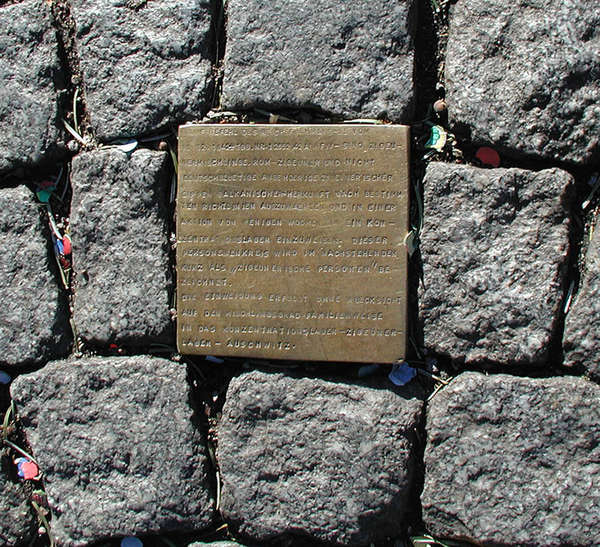Stolpersteine to remember the victims of National Socialism
- 16. December 2017 - Anniversary, General, Germany, Hamburg, Historical Documents, Historical Events, History, Knowledge, WWII
It is probably one of the best known commemorative projects. By now more than 60,000 “Stolpersteine” of the artist Gunter Demnig can be found in more than 1,000 places and cities – not only in Germany but in more than 20 countries throughout Europe. The victims are commemorated in front of their last address of choice. Individual fates become visible within the cityscape. It becomes clear that deportations happened right there in the neighborhood. They are a reminder on the persecution and annihilation not only of Jews but of all victim groups of National Socialism. “Stolpersteine” are for example installed for Sinti and Roma, homosexuals, people who were persecuted on political and religious grounds as well as victims of euthanasia.
In fact, the project originates in the commemoration of the deportation of Sinti and Roma in Cologne. In 1990, Gunter Demnig traced the routes of their deportation through the city. Two years later, he first embedded a stone with a brass plate in the ground. This could be seen as the very first “Stolperstein”. It was installed without permission in front of the historic town hall in Cologne on 16 December 1992 on the occasion of the 50th anniversary of the order to deport Sinti and Roma by Heinrich Himmler (Auschwitz decree). The stone is very different to the presently installed ones. It does not commemorate an individual person but reproduces the beginning of the implementation rules for the mentioned decree. But in the media it apparently was already called “Stolpertstein” (stumbling stone).

In the following years, Gunter Demnig developed his project “Stolpersteine” as we know it today. As early as 1995 some stones were installed illegally in Cologne. The first official embeddings, still without permission, were in Berlin in 1996 as part of an exhibition. The first authorized installations in Germany took place in 2000. This was the official start of today’s project. Since 2002 Hamburg is part of this project of remembrance. More than 5,000 “Stolpersteine” have already been installed in the Hanseatic city.
The “Stolpersteine” are concrete cubes with the dimensions of 9.6 x 9.6 cm and 10 cm height. They are attached to a brass plate with the inscription. The stones are always handmade and Gunter Demnig himself decides on the texts and the terminology by means of the research results. They always contain the name, the year of birth, year and destination of deportation and some information on the respective fates. Where too many “Stolpersteine” would have to be installed, a so-called “Stolperschwelle” (stumbling threshold) can be embedded. It can be up to 1 meter long and document what happened at the place.
Everybody can sponsor a “Stolperstein”. In many places voluntary initiatives and projects emerged. There are clean-up operations as well as guided tours. Often there are student projects, too. Thousands of biographies have been researched for the project and were often published beyond that.
However, there is resistance as well. Some public authorities refuse to give permission to the installations and opinions differ within the victim groups.
You are interested in sponsoring a “Stolperstein”? We will gladly assist you in the research as well as with the application.

27. December 2017
Thank you very much for your kind words, Debbie! I was delighted to hear from you and hope you are well.
25. December 2017
Thank you Andrea, for this enlightening article. Congratulations on all your work. I have fond memories of you at AAA in New York! Clearly you have pursued your passion and applied your talents with great success.
18. December 2017
Thank you very much. We are happy that you appreciated the article!
17. December 2017
The history of Stolpersteine has so much depth with the perception of the people that makes it so unique. You brought this true story back to life, and it recognizes extraordinary heights with preservation and prosperity. Thanks for sharing Andrea.